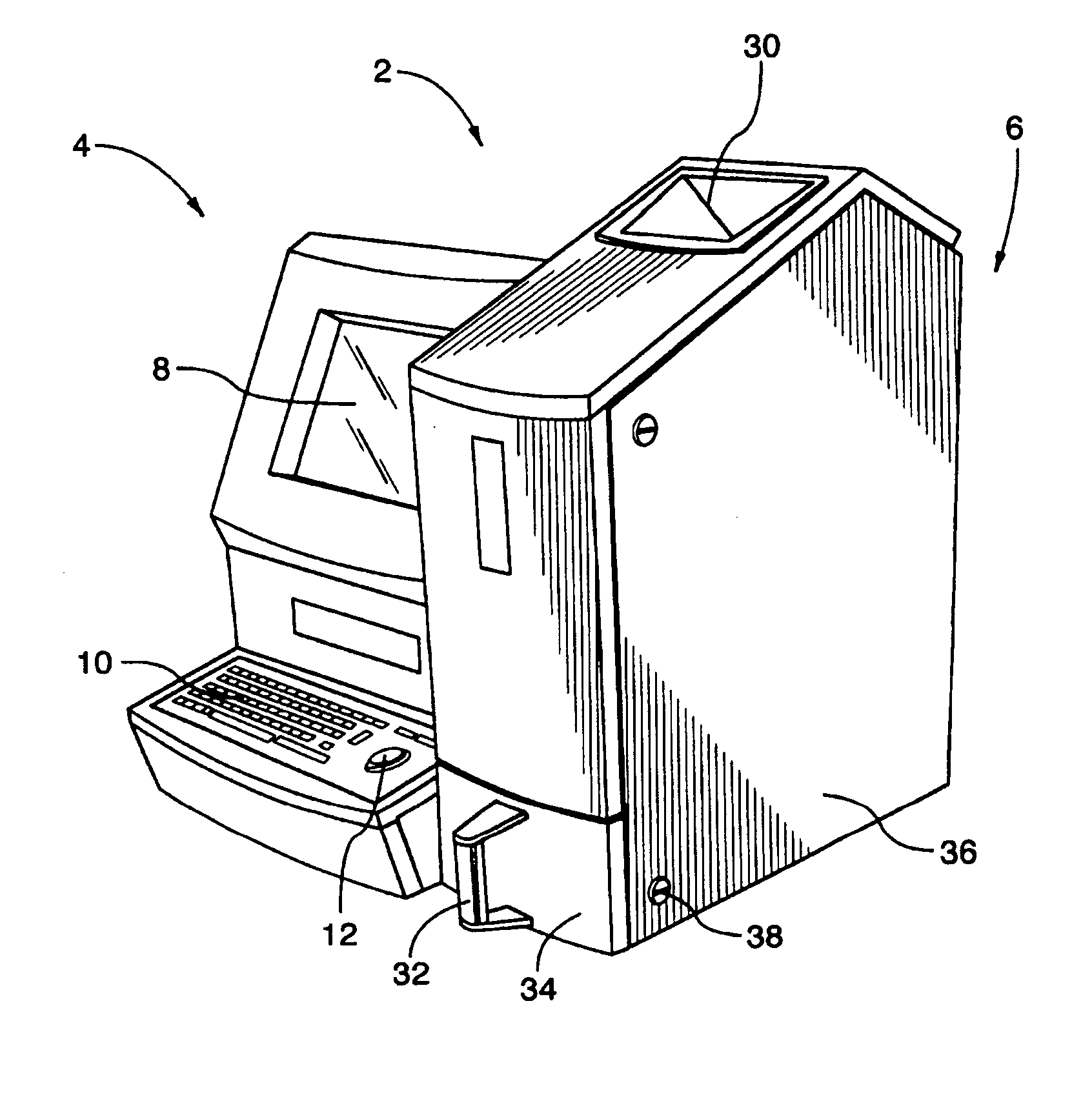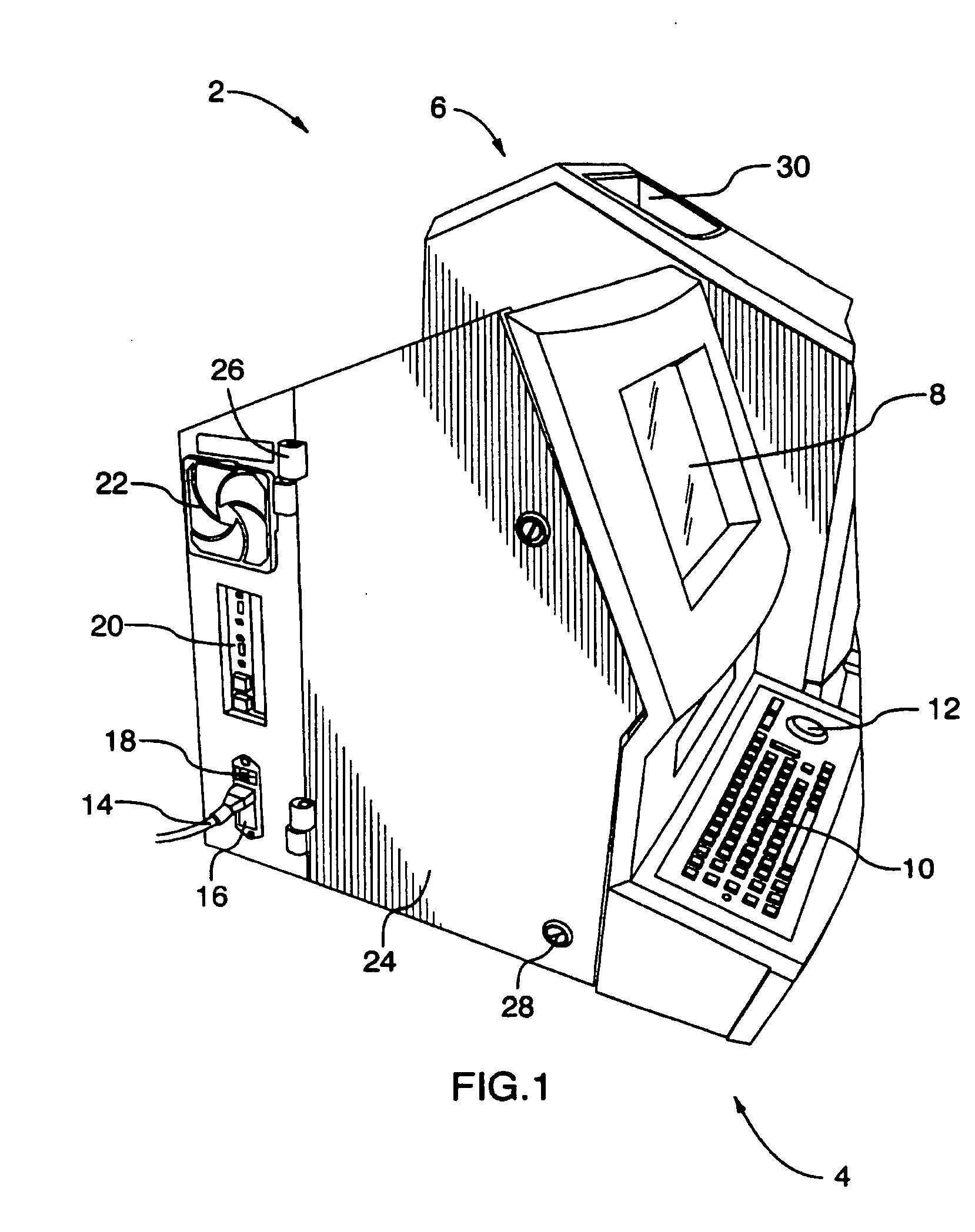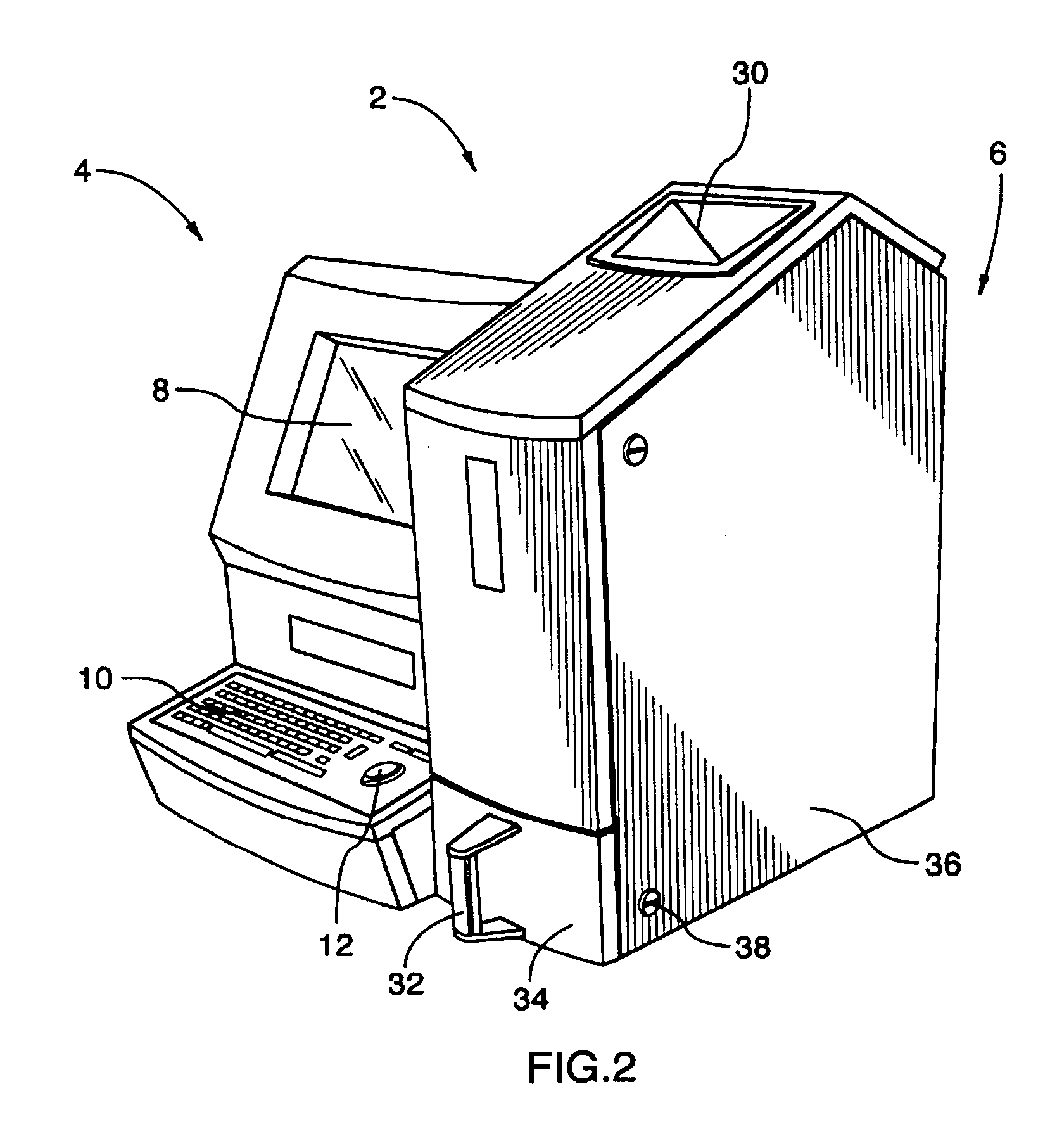Object analysis apparatus
a technology of object analysis and apparatus, applied in the direction of adaptive control, process and machine control, instruments, etc., can solve the problems of limited sample number, no guarantee that every seed within all samples is inspected, and no guarantee that a load is evenly sampled
- Summary
- Abstract
- Description
- Claims
- Application Information
AI Technical Summary
Benefits of technology
Problems solved by technology
Method used
Image
Examples
Embodiment Construction
[0045] A specific embodiment of the present invention is explained hereunder with reference to the accompanying drawings.
[0046] As used in the present specification, “objects” means flowable, dry solid objects including, but not limited to seeds, grains, polymer pellets, mineral particles, and manufactured hardware. Examples of objects that may be analyzed in this invention include, but are not limited to, those utilized in the manufacture of, or produced from the manufacturing of pharmaceuticals, foodstuffs, electronics, agricultural products and automotive products. Objects to be analyzed in this invention may range in size and shape, but are typically in the size range of about 2 mm for a minimum dimension to about 10 mm for a maximum dimension. If rod shaped, a suitable size range is about 2 mm diameter to about 6 mm long to about 4 mm diameter to about 10 mm long; if spherically shaped, a suitable object size range is of about 2 mm in diameter to about 10 mm in diamter. Batch ...
PUM
| Property | Measurement | Unit |
|---|---|---|
| size | aaaaa | aaaaa |
| diameter | aaaaa | aaaaa |
| diameter | aaaaa | aaaaa |
Abstract
Description
Claims
Application Information
 Login to View More
Login to View More - R&D
- Intellectual Property
- Life Sciences
- Materials
- Tech Scout
- Unparalleled Data Quality
- Higher Quality Content
- 60% Fewer Hallucinations
Browse by: Latest US Patents, China's latest patents, Technical Efficacy Thesaurus, Application Domain, Technology Topic, Popular Technical Reports.
© 2025 PatSnap. All rights reserved.Legal|Privacy policy|Modern Slavery Act Transparency Statement|Sitemap|About US| Contact US: help@patsnap.com



